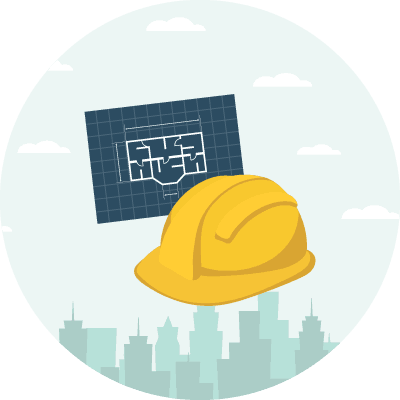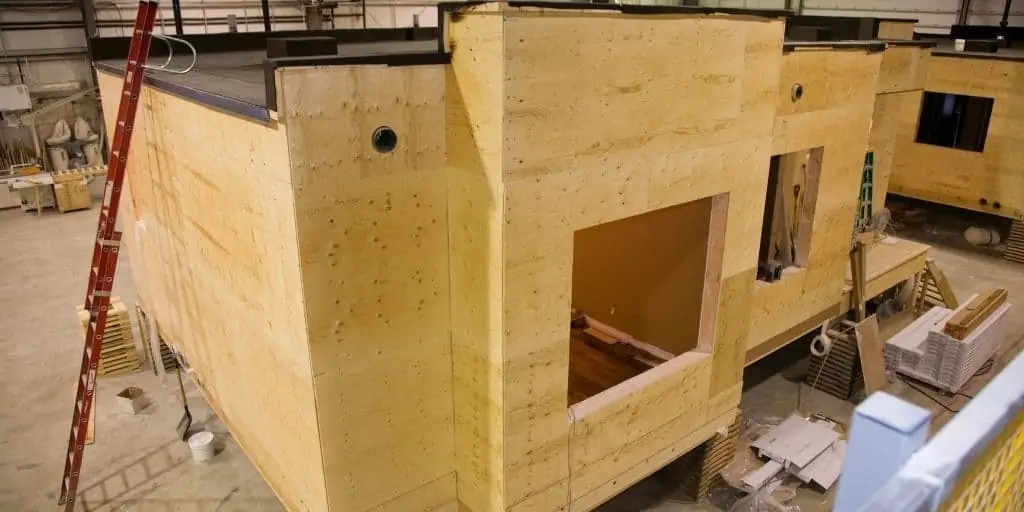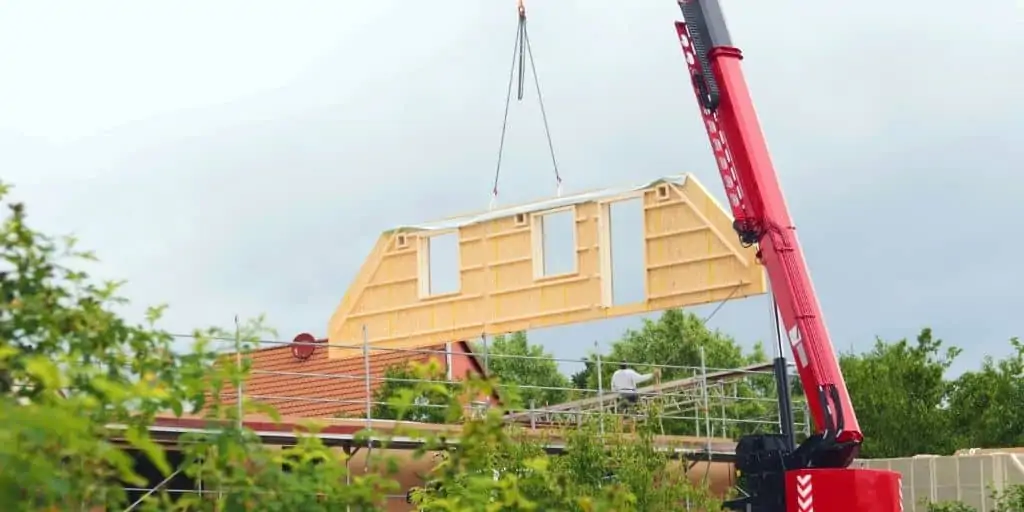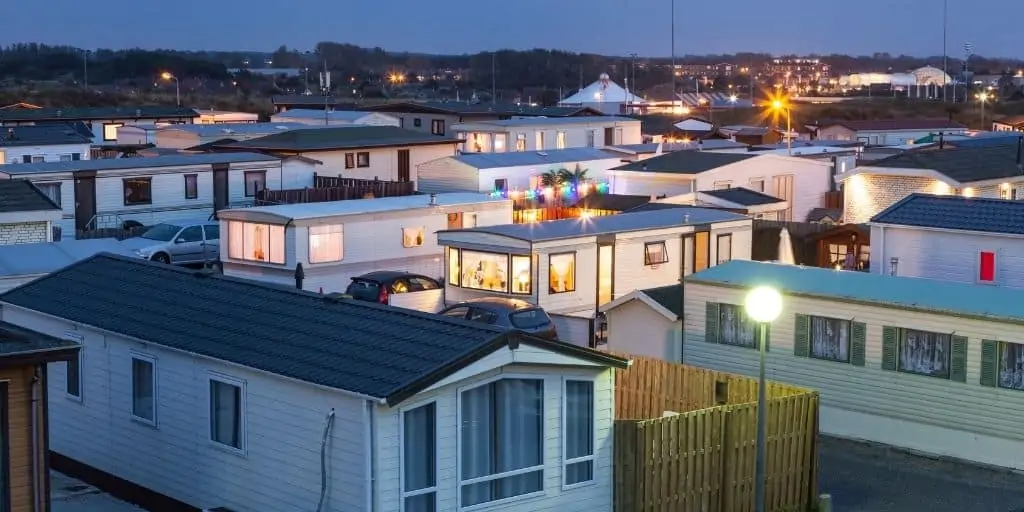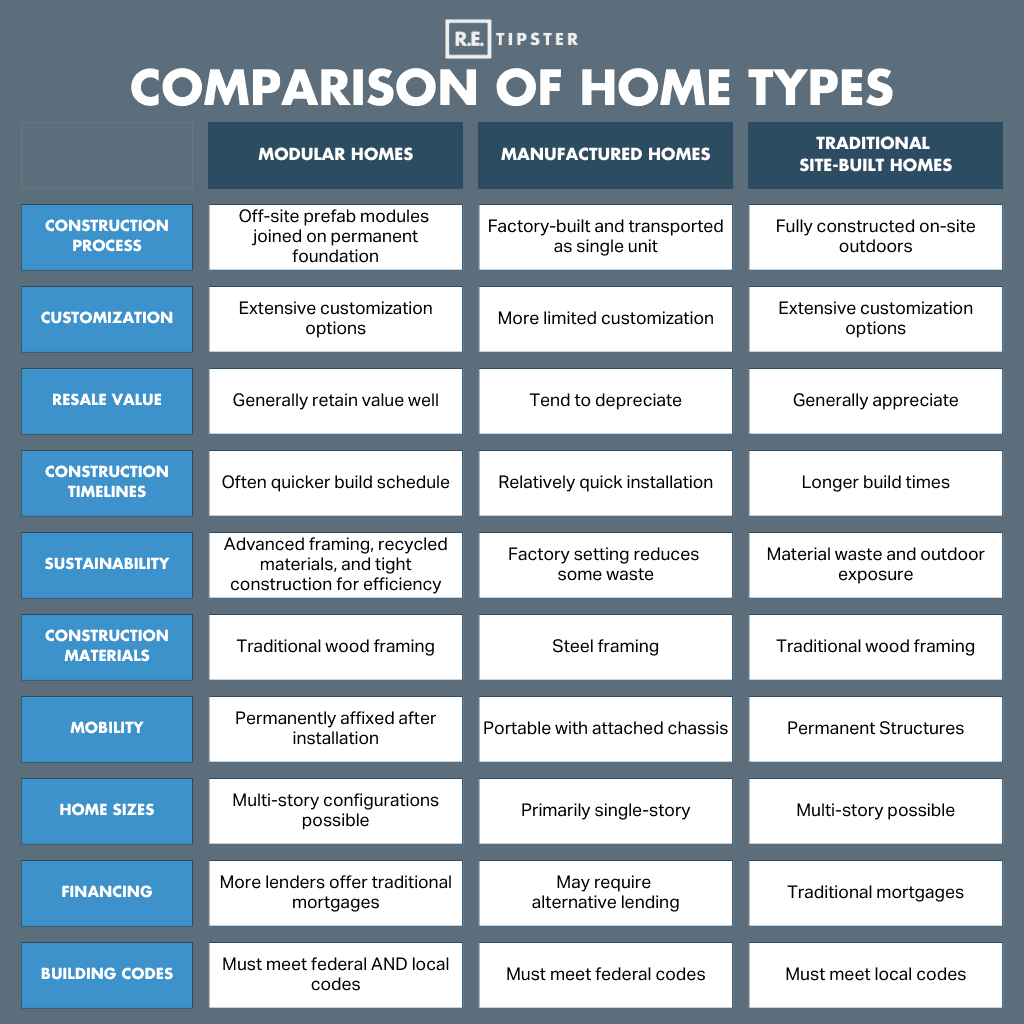What Are Prefabricated Homes?
What Are Prefabricated Homes?
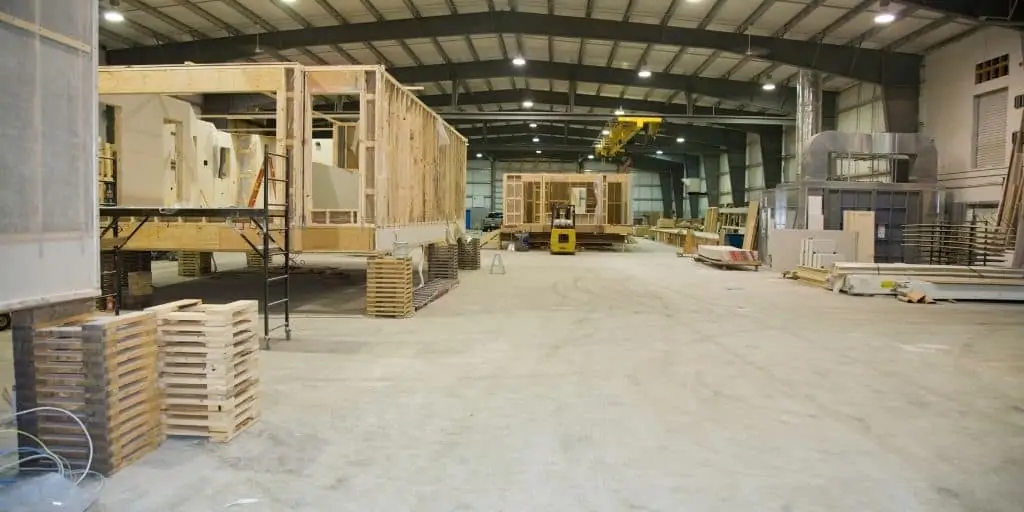
Prefabricated homes or prefab are houses built in a factory or somewhere else that is not the intended place of its erection or occupancy. Most prefab homes are dwellings that are produced piece-by-piece, although some can be built as one whole unit and can be transported and assembled on-site, usually with the help of detachable wheels.
Most prefab homes are cheaper and more sustainable than traditional homes, which are built on-site. The downside is that most, if not all, prefab homes often depreciate.
The term “prefab homes” represents an entire category of houses, so one prefab home can be significantly different from another. There are two common types of prefab dwellings: modular and manufactured (also known as mobile homes for dwellings built before 1976).
What Are Modular Homes?
Modular homes are prefab houses made up of independent sections, called modules, built in a factory. They are then assembled together on-site atop a permanent foundation.
In terms of design versatility, modular homes are customizable because their modules can be interchangeable. They come in various architectural styles and floor pieces, and some modular homes even include whole basements.
Modular homes can also be built much more quickly, making them highly affordable. On average, they can cost up to $60 less per square foot than site-built properties[1].
The Popularity of Modular Homes
Modular homes are the most popular examples of prefab structures, thanks to many people conflating the terms “prefab homes” and “modular homes.” However, all modular homes are prefab, but not all prefab homes are modular.
Like site-built houses, modular homes must comply with local, state, and regional building codes in the United States. That is why casual observers may not be able to distinguish modular homes from traditional houses.
In addition, modular homes tend to follow real estate trends. They appreciate over time along with ordinary houses when real estate markets are hot. And when markets cool down, the prices of modular homes can go down as the general cost of properties in local areas decrease.
Considering that high prices are one of the barriers to home ownership[2], many are starting to think that modular homes may hold the answer to America’s housing crisis[3].
What Are Manufactured Homes?
Manufactured homes are prefab structures completely built in a factory. A contractor that specializes in manufactured homes can relocate the entire structure to the site. For this reason, most manufactured homes are built on a fixed, steel chassis with a detachable set of wheels.
What makes them different from a modular home is that they are made as a whole unit instead of sectional modules. Builders only need to move them from where they are made to their intended location before homeowners can occupy them. In some cases, they may be erected on a set up on a permanent foundation with a crawl space or a basement.
While some manufactured homes can also come in sections, their sections may not necessarily be interchangeable and independent, like those of a true modular home. Multi-section models can arrive on a site separately and pieced together there.
These prefab houses have many design limitations, but they also allow the use of add-ons like porches and decks.
Manufactured Homes and Legal Codes
On the legal aspect, a manufactured home is subject to the federal code set by the Department of Housing and Urban Development (HUD)[4]. Multi-section manufactured homes display a HUD seal for each segment. The HUD has revised the standards for manufactured homes since 1976[5], which have improved them to the point that they have become arguably better than site-built properties.
Unfortunately, the public’s perception of manufactured homes has not completely disappeared. Because of this, these prefab houses tend to depreciate over time.
BY THE NUMBERS: 22 million people live in manufactured homes in the United States.
Source: Manufactured Housing Institute
What Are Mobile Homes?
In modern usage, mobile homes refer to manufactured homes built on a permanently attached chassis. In particular, many people use the term to refer to prefab houses that are bigger than travel trailers[7] found in trailer parks used as residential dwelling.
As their name suggests, mobile homes lend themselves to relocation. However, a mobile home owner must secure a permit[8] before hooking it up to a truck and towing it on the streets and highways.
Some owners use their mobile homes as their permanent residence. In this case, these prefab houses stay in one place all year long. When used for vacation or temporary accommodation, mobile homes may occasionally move to sites.
Mobile Home History
Mobile homes were prefab houses completely built in a factory before the HUD code came into effect. In other words, they were the unregulated version of today’s manufactured homes.
In fact, the Housing Act of 1980[6] mandated the U.S. federal government to replace the term “mobile homes” with “manufactured housing” in all federal laws and literature. The term “mobile homes” has been technically removed from the language in federal documents, but many people still use it colloquially to this day, especially when referring to prefab homes in trailer parks with outsized travel trailers.
Mobile home builders used to skirt around construction regulations related to safety and quality. As a result, the prefab home industry was known for building low-quality houses. Later on, the industry worked with the U.S. Congress to establish standards builders must observe to shed its bad reputation.
Prefab vs. Modular vs. Manufactured vs. Mobile Homes: What Are Their Differences?
Modular and manufactured/mobile homes are different types of prefab homes.
To many people, modular homes are just another term for prefab homes, which also include manufactured homes. However, the similarity between modular and manufactured homes ends there.
Here is an overview of their similarities and differences, using a traditionally built home as a reference. Note that for the purposes of this table, manufactured homes and mobile homes are treated as identical.
Takeaways
- Prefabricated (or prefab) homes are houses made in a factory instead of being built on-site. There are three main types of prefab homes: modular, manufactured, and mobile.
- Modular homes are prefab houses made up of sections and permanently assembled on-site based on local, state, and regional building codes.
- Manufactured homes are prefab houses that are made in a factory as a single unit and then moved to the site.
- Mobile homes were, prior to 1976, synonymous with manufactured homes but have now come to mean any prefabricated structure that can be transported and lived as is, like trailers and RVs.
Sources
- MYMOVE. (2020.) Modular Homes: Everything You Need to Know. Retrieved from https://www.mymove.com/home-inspiration/decoration-design-ideas/basic-facts-about-modular-homes/
- Babb, C. (2021.) Addressing the Most Significant Barriers to Homeownership. MReport. Retrieved from https://themreport.com/daily-dose/06-23-2021/addressing-the-most-significant-barriers-to-homeownership
- Johnson, R. (2021.) Can Modular Homes Help Solve America’s Housing Crisis? The Tech Report. Retrieved from https://techreport.com/blog/3474030/americas-housing-crisis/
- Adkins, C. (2019.) Manufactured Home HUD Tags, Labels, Serial Numbers, And Data Plates. Mobile Home Living®. Retrieved from https://mobilehomeliving.org/manufactured-home-hud-tags-data-plates/
- PD&R. (2014.) 40 Years Ago: Manufactured Housing Construction and Safety Standards Act Passed (National Low Income Housing Coalition). Retrieved from https://www.huduser.gov/portal/pdredge/pdr_edge_news_070214_1.html
- Kaufman, T. (2009.) Chapter 1: Housing History and Purpose. Centers for Disease Control and Prevention. Retrieved from https://www.cdc.gov/nceh/publications/books/housing/cha01.htm
- Bartlett, J. & Mutchler, T. (2020.) Beginner’s Guide to RV Trailers. Consumer Reports. Retrieved from https://www.consumerreports.org/other-motor-vehicles/beginners-guide-to-rv-trailers-a1157026345/
- Mueller, L. (2019.) 4 Laws on Moving a Mobile Home You Need to Know. Moving.com. Retrieved from https://www.moving.com/tips/4-laws-on-moving-a-mobile-home-you-need-to-know/
- Colley, A. (2019.) Buying a Mobile Home: What You Need to Know. Realtor.com®. Retrieved from https://www.realtor.com/advice/buy/buying-a-mobile-home-what-you-need-to-know/
